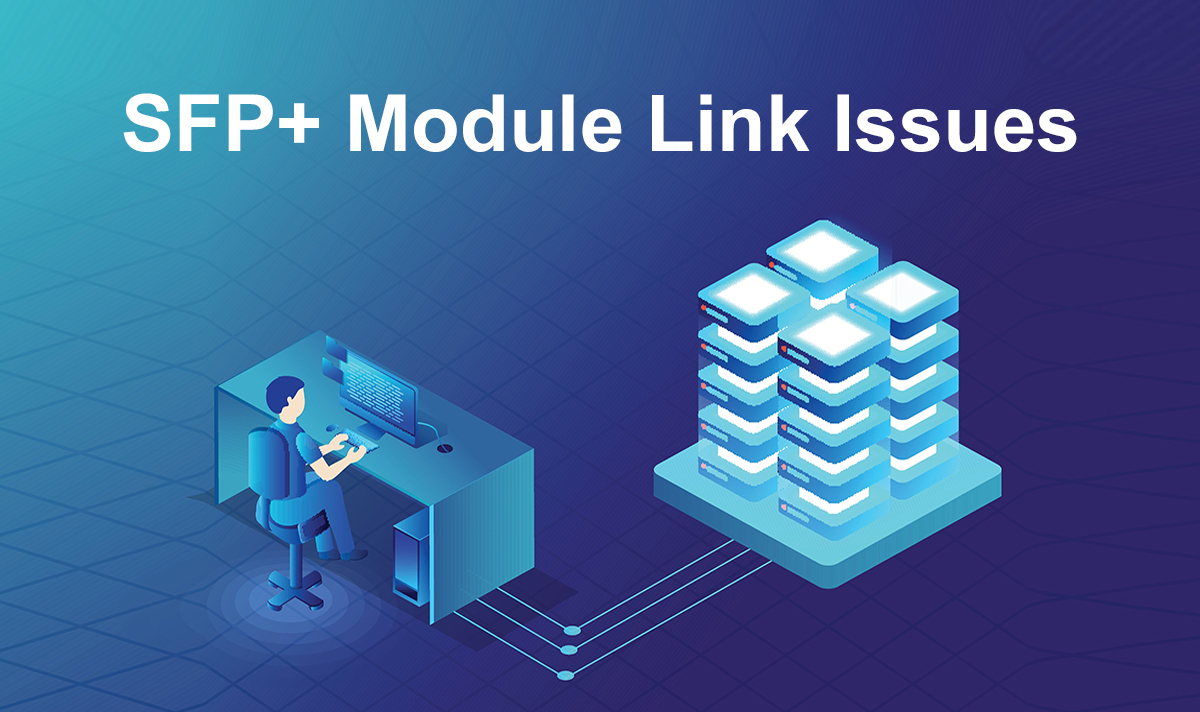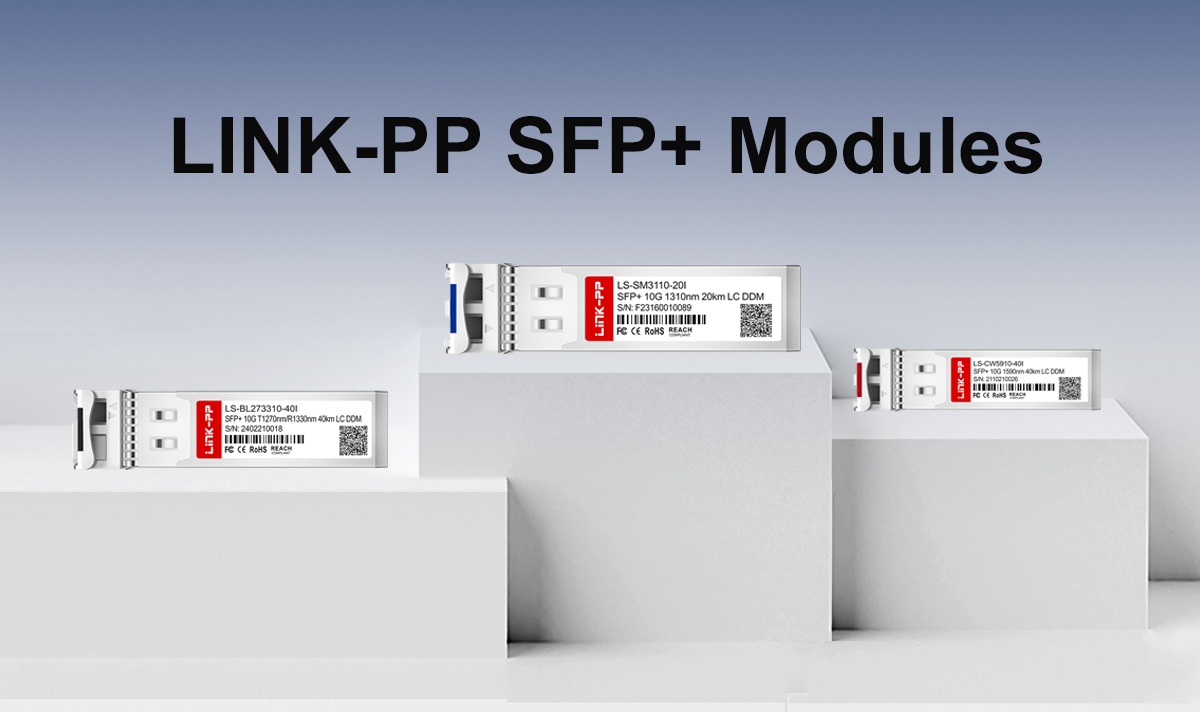
You can quickly resolve SFP+ Module connectivity issues by following a systematic optical transceivers troubleshooting process. Check for common connection problems, such as link failures or modules not recognized. Inspect the sfp module and cables. Choosing LINK-PP SFP Transceivers often reduces connection issues and improves troubleshooting results.
Key Takeaways
Inspect and clean SFP+ modules and fiber connectors regularly to prevent common issues like link failure and high error rates.
Use vendor-approved SFP+ Optical Transceivers and keep your switch firmware updated to ensure compatibility and stable connections.
Monitor environmental factors such as temperature and airflow to avoid overheating, which can cause module failure and connectivity problems.
Why 10 GbE SFP+ Links May Fail
In 10 Gigabit Ethernet, SFP+ modules rely on an SFI interface and must operate at fixed 10 Gbps full‑duplex—there's no auto‑negotiation like in Gigabit links. This strict protocol amplifies the impact of even minor mismatches or errors.
2. Common Causes of Link Failure in SFP+ Networks
🔹 A. Module/Port Speed Mismatch
Even though an SFP+ fits into an SFP port, a 10 Gbps transceiver cannot auto-negotiate down to 1 Gbps. Conversely, an SFP in an SFP+ port locks at 1 Gbps or won't work.
🔹 B. Wavelength or Fiber Type Mismatch
Link failure often occurs if modules at either end use different wavelengths (e.g. 850 nm vs 1310 nm) or mismatched fiber type (multimode vs single‑mode). BiDi (bidirectional) optics must pair correctly with BiDi counterparts.
🔹 C. Poor Cable or Connector Quality
Dirty, damaged or bent fiber, dusty connectors, and dirty ferrules raise BER or prevent link establishment entirely. Connector contamination is one of the most common silent killers.
🔹 D. Module or Port Hardware Issues
Try swapping the SFP+ to another port: if a different port works, the issue may be a faulty cage or port. Replace the module if none work. Hardware faults in module or port are common points of failure.
🔹 E. Overheating or High Power Draw
If a module overheats (often above ~70 °C), it may shut down or cause link flapping. Copper SFP+ modules like 10GBASE‑T draw more power and can run hot on under-specced ports.
🔹 F. Configuration Errors
SFP+ links do not auto-negotiate speed or duplex. If the link partner isn’t set to 10 Gbps full‑duplex explicitly, no link forms. Some platforms even require “no negotiate” configuration for unsupported SFP+ modules.
Step-by-Step Troubleshooting Workflow
✅ Step 1: Check Physical Installation
Verify module is fully seated (you should hear/felt the click). Loose seating often prevents detection.
Clean fibre connectors and ferrules with proper tools; use dust caps during idle periods.
✅ Step 2: Confirm Transceiver Type Match
Make sure both ends use 10G SFP+ modules, not mixing with 1G SFPs.
Ensure matching wavelength and fiber type pairs: SR–MMF for short reach, LR–SMF for long reach.
✅ Step 3: Inspect Cables and Polarity
Swap the fiber or DAC cable with one confirmed working.
For multimode links, check fiber polarity mapping—incorrect polarity between patch panels can break the link entirely.
✅ Step 4: Check Configuration & Firmware
Ensure both ports are enabled and set to 10 Gbps full‑duplex; disable negotiation if needed.
Update device firmware as older versions may reject third‑party SFP+s or mishandle DOM data.
✅ Step 5: Test Diagnostics & Swap Hardware
Run DOM/DDM diagnostics to monitor temperature, voltage, and optical power. Compare values to module specifications.
Substitute with known-good SFP+ modules and ports to isolate defects.
✅ Step 6: Monitor for Intermittent Issues
For intermittent or flapping links, overheating is often the cause. Ensure adequate airflow and adequate cooling.
Replugging cables or rebooting ports temporarily resolves symptoms if it's thermal or hardware-related.
LINK‑PP 10G SFP+ Transceivers Advantages
LINK‑PP SFP+ modules are MSA‑compliant and tested across popular platforms, helping reduce compatibility errors. They support DOM and operate within strict thermal and power specifications to minimize overheating risks. Reliable documentation and community resources from LINK‑PP further support network engineers in rapid failure diagnosis.

5. Quick Troubleshooting Summary Table
Symptom | Likely Cause | Recommended Fix |
|---|---|---|
No link at both ends | Speed/port mismatch | Use 10 Gbps SFP+ on both ends, disable negotiate |
No link intermittently | Dirty fiber, loose seating | Clean connectors, reseat module |
One‐way link up only | Wavelength or polarity mismatch | Match wavelength and fiber polarity |
Link drops over time | Overheating or power overload | Improve ventilation, swap high‑power module |
Module not detected | Compatibility block or firmware issue | Update firmware or use vendor-compatible module |
Summary
Troubleshooting SFP+ link issues in 10 GbE networks requires attention to module type, match of speed and wavelength, clean fiber connections, correct configuration, thermal management, and equipment compatibility. By following structured checks and leveraging diagnostic tools like DDM, network engineers can efficiently restore reliable performance.
Using LINK‑PP SFP+ transceivers—built to meet stringent specs, interoperable across platforms, and supported with quality documentation—further helps avoid many common link problems.
For certified LINK‑PP 10 G SFP+ modules and support resources, visit the official store: l‑p.com.




